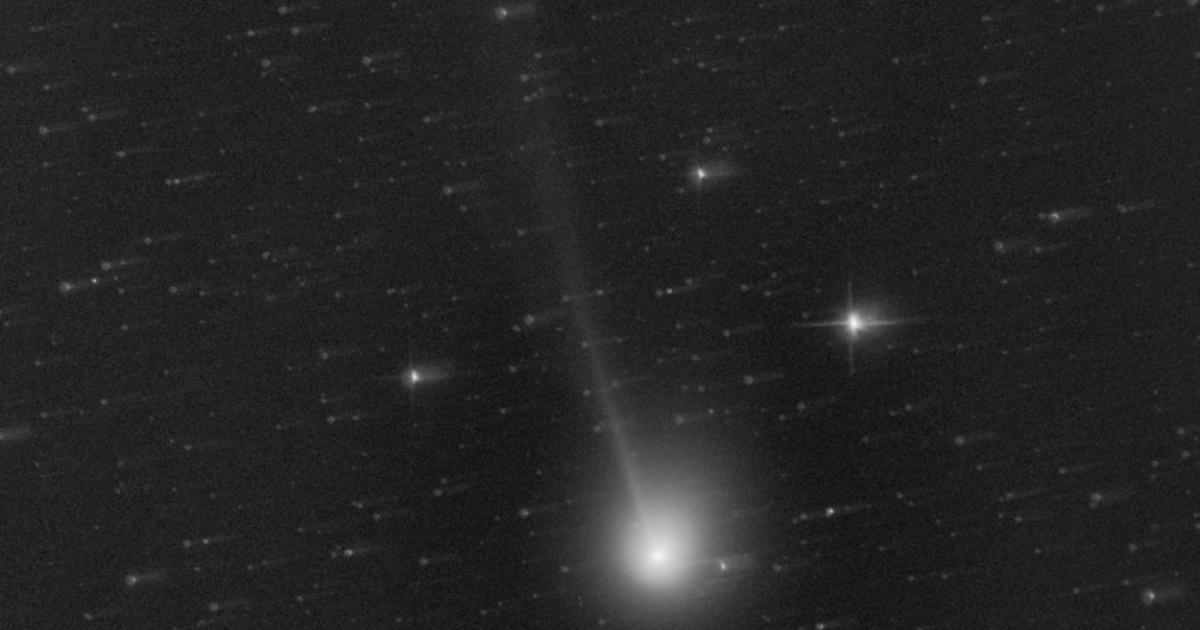The comet, which passes Earth once every 71 years, is now visible in the night sky The Independent. The comet will shine brighter over the next two weeks, but astronomers will need a telescope or binoculars to see the phenomenon.
The Devil's Comet has a diameter of 30 kilometers and revolves around the sun in a highly elliptical orbit every 71 years. It can currently be seen in the night sky using a telescope or binoculars.
Astronomers say 12P/Pons-Brooks is getting brighter, and there's a chance astronomers will be able to see it with the naked eye in the coming weeks.
According to Megan Argo, an astrophysicist at the University of Mid Lancashire, the planet has already experienced several bursts of activity that have regularly increased its brightness. “If we're lucky, there may be an occasion in the next few weeks when it will clearly cross the sky. ShYou can think of them as a giant dirty snowballArgo said comets are mainly composed of dust, rocks and ice.
Named after its discoverers Jean-Louis Pons and William Robert Brooks, 12P/Pons-Brooks spends most of its time in the outer solar system, where it is very cold.
It returns to the inner solar system every 71 years, so it is known as a periodic comet.
Comet Pons Brooks in the northern spring
As spring approaches for northern skygazers, Comet 12P/Pons-Brooks is getting brighter. The Halley-type comet can currently be seen with small telescopes and binoculars, and will be visible with the naked eye in the coming weeks. Watch despite the fog.. pic.twitter.com/4EnghTiAbJ
– Astronomy photo of the day (@apod) March 10, 2024
A comet sometimes erupts when radiation from the Sun breaks its ice shell, ejecting volcanic ice melt into space. A periodic Halley-type comet was first discovered by Jean-Louis Pons on July 12, 1812, and then discovered by William Robert Brooks in 1883.
As the comet approaches the sun, the heat causes the ice to turn directly into gas — a process called sublimation — and some material is lost from the surface, Argo said.
This gas forms a cloud around the comet's solid core – known as a coma – and a plume of material extending millions of miles into space. The column consists of gas and dust emitted from the comet by the solar wind coming from the Sun, and this tail is the part that can become amazing in the sky as seen from Earth.
– Tell Megan I hope astrophysicist, adding that while 12P/Pons-Brooks is developing a beautiful plume, it is “not yet fully visible without a telescope or binoculars.” For those looking to spot the comet, it is located below and slightly to the left of the Andromeda Galaxy.
Stuart Atkinson, an amateur astronomer from Cumbria, has been tracking the object for some time. Technically, 12P/Pons-Brooks should now be visible with the naked eye, but “you actually need a telescope or binoculars to see it because most people live in light-polluted places,” he said.
People think that comets race across the sky like meteors, but that's not true. They move only a small amount each night, so the comet will stay in the sky longer
– said amateur astronomer Stuart Atkinson. He said, “It will shine a little brighter over the next few weeks, but the moon is in the sky now and its brightness will outshine the comet.”
According to the amateur astronomer, the best way to observe the comet is to find a place where the sky is dark and there are no tall trees, buildings or hills blocking the view. “You would need a telescope to see the comet, and even then it looks like a smudged star with a plume behind it,” he said. “Fortunately, there is a bright planet very close to it – Jupiter – so moving the telescope very slowly to the right helps.”

5 books
Over 600 amazing, exciting and educational stories!













































